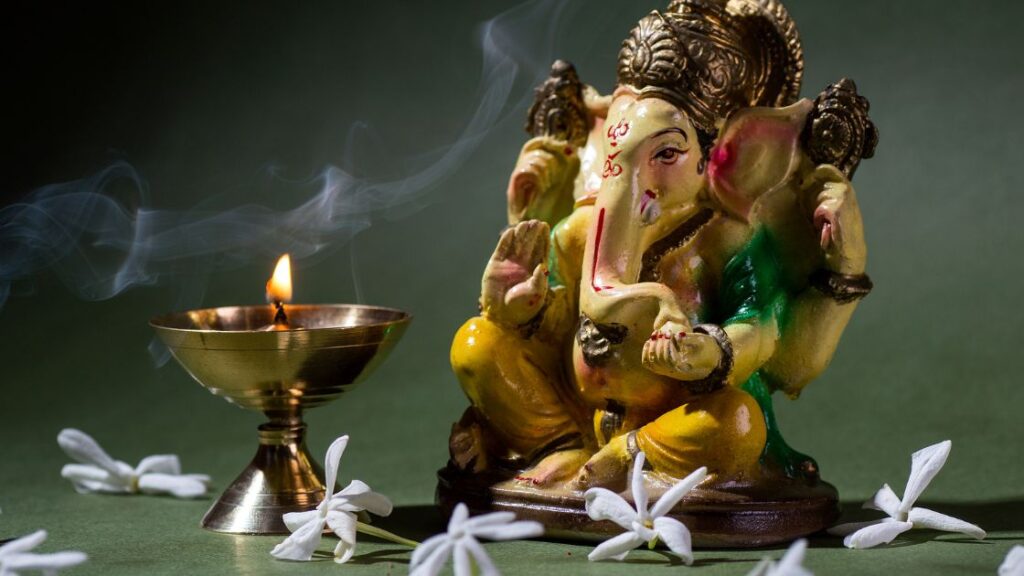Ganesha (Vinayaka)

Hinduism is the most ancient theology in the world. Devout of the Hindu religion worship different gods on different occasions. Whenever we commence any puja, first Adi deva will be worshipped to remove any obstacles that may occur in our lives. If you are born into a Hindu family, there is no need for an introduction to Ganesha. Irrespective of caste and creed, Ganesha is worshipped by all. He is worshipped by Jains and Buddhists as well. We can see his status and carvings in overseas countries like Java, Indonesia, Sumatra, Laos, Cambodia, Thailand, and Burma. He is the son of Mahadeva and Ma Parvathi. Kumaraswamy is his brother. Ganesha is worshipped as the God of wisdom, prosperity, the arts, and sciences.
Origin
The name Ganesha is a Sanskrit derived from two words, where Gana means the group of common people and isha means lord or master. He has 108 names derived from the Sanskrit language such as Ekadantha, Vignaraja, Lambodara, Vinayaka, Buddhapriya and so on…He finds mention in puranas like Ganesha’s Purana and Mudgala Purana. Brahma Purana and Brahmanda Purana.
Ganesh symbolism :
The famous sloka dedicated to Lord Ganesh describes him thus.
- “Vakra Tunda Mahakaaya Koti Surya Samaprabha
Nirvana Kurume Deva Sarva Kaaryeshu Sarvataa”
We all know that Vinayaka has a huge body and an elephant face.
The elephant head symbolises :
- Gyan, or wisdom, is the understanding that one must have in order to achieve perfection in life.
- The wide mouth depicts the human desire to enjoy life on earth.
- The large ears signify listening to what others say with patience and assimilating ideas.
- The trunk holds anything and everything that exists in the universe. It also represents the OM sound symbol of cosmic reality.
- The two white tusks signify the two qualities of human personality. Gyan is represented by the right tusk, and emotion is represented by the left tusk.
- The elephant eyes denote surrendering pride and attaining humility.
- The Trishul on his forehead represents Ganesha’s mastery over time (past, present, and future).
- The axe in his hand represents, all desires are shortened, as are the bearers of pain and suffering.
- The whip in his hand denotes getting rid of worldly attachments and desires.
- Ganesha’s cosmic belly is a Hindu religious symbol. His belly holds the entire universe. oceans, for example, and seven realms above and below the surface. together by kundalini ( cosmic energy)
- The snake wrapped around his waist represents all forms of energy.
- His vahana rat/mouse ego must be subdued. Ganesha consciousness is present in someone who has control over their ego.
- Ganesh is typically depicted wearing yellow and red clothing.
Yellow is associated with purity and peace. . Red represents responsibilities and activities. All duties in life must be performed with peace, purity, and truthfulness. These are the in-depth interpretations of Ganesha’s various forms. Vinayaka is deeply loved by Hindus all over the globe. Especially children love him alot. on his festival Vinayaka chavithi, which is his birthday and is commonly held in between August and September.
Content Specific Keywords: ganesha vinayaka, ganesha vinayaka songs, ganesha vinayaka pictures, gowri ganesha vinayaka, sri ganesha bhajan, gauri ganesha, shree ganesha, sri ganesha, vinayaka ho siddha ganesha lyrics, vinayaka 108 names ganesha ashtothram in telugu, sri selva vinayakar koyil (ganesha temple)

